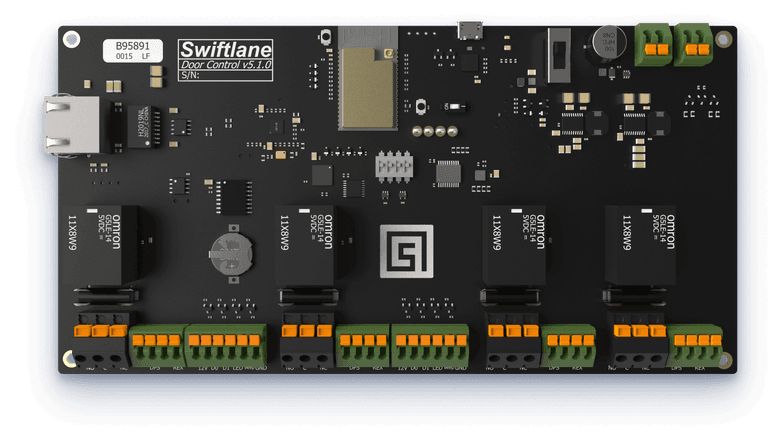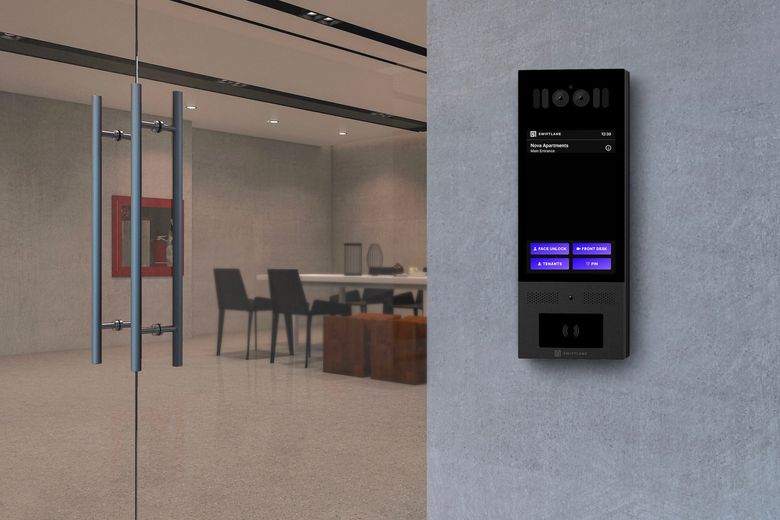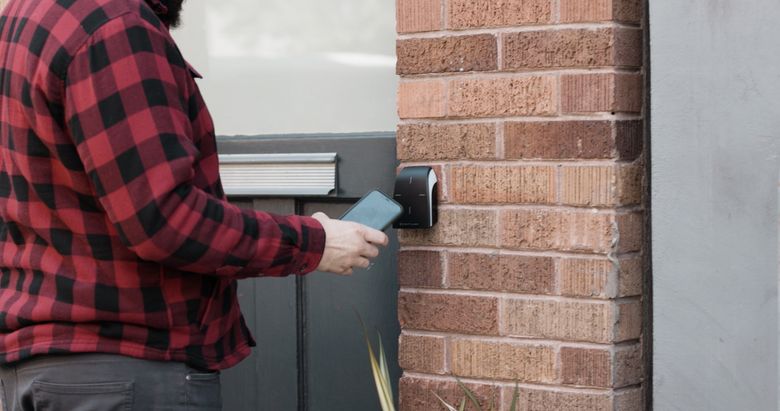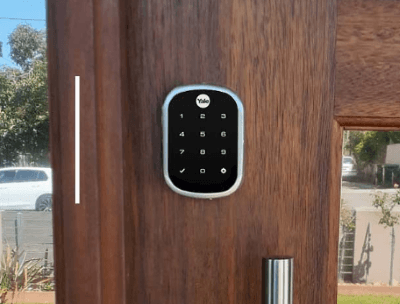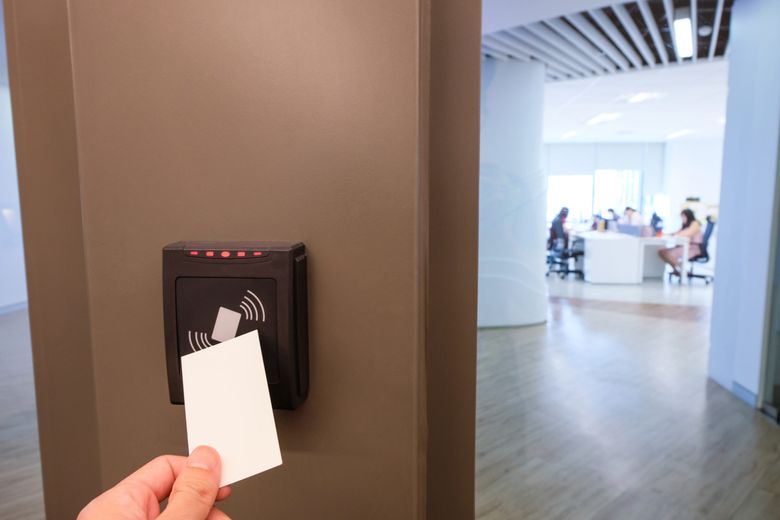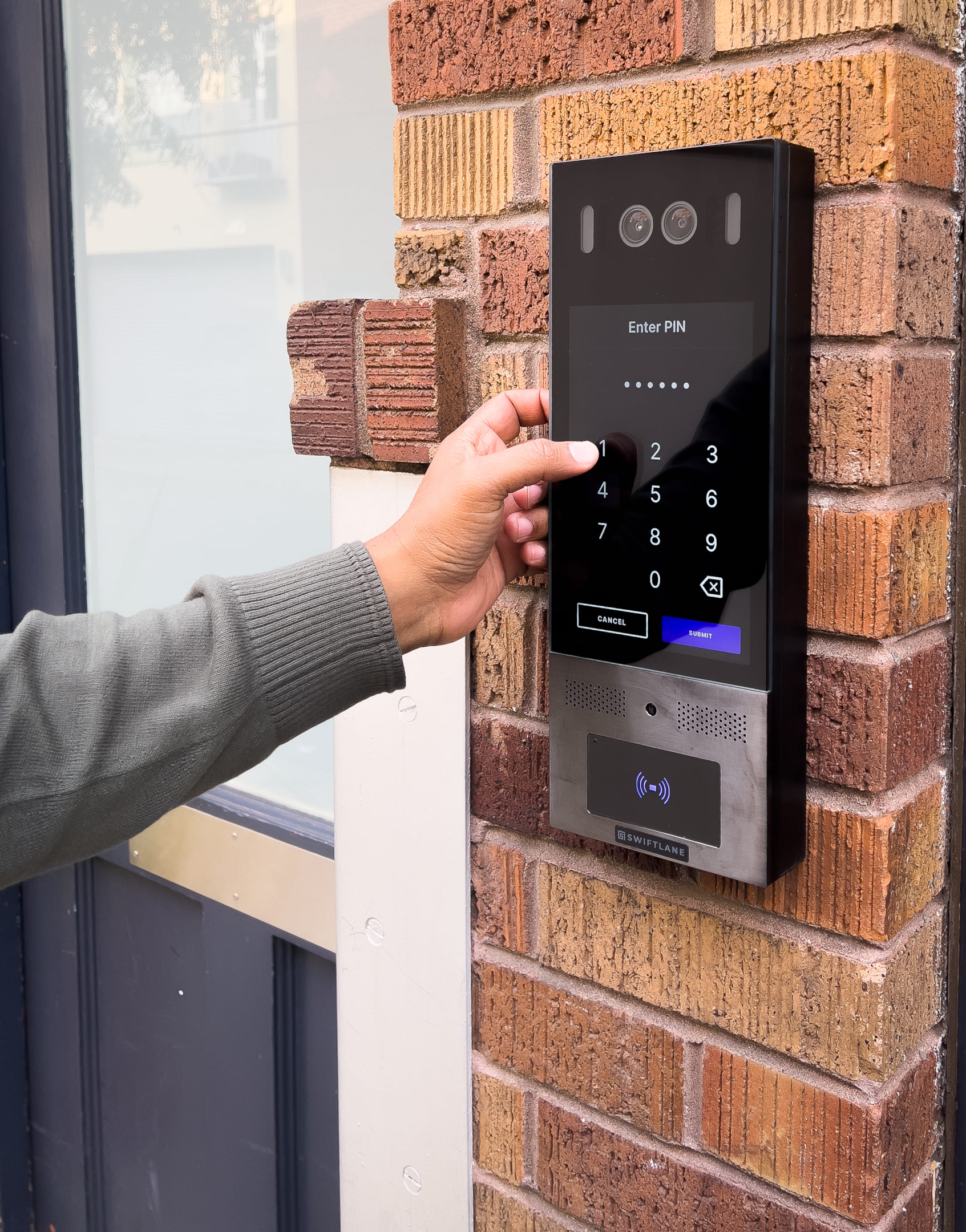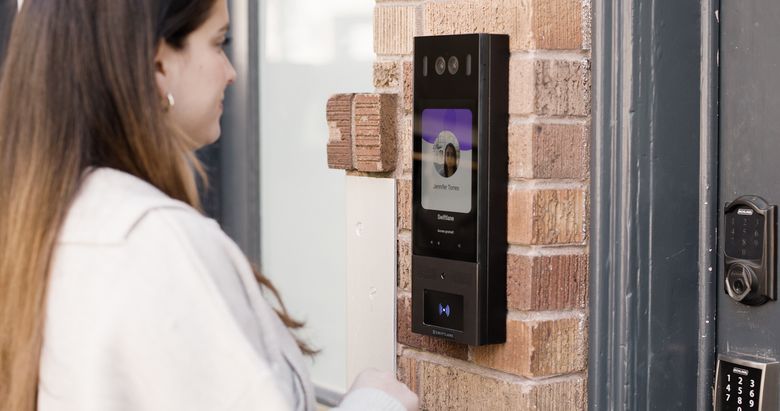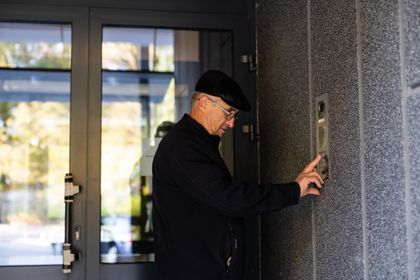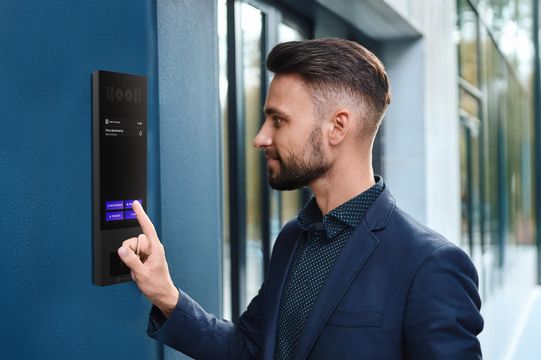Article updated on 8th April, 2025
Security remains a top priority in 2025, especially with the booming technological sphere and increasing threats to organizational assets. In today’s multifamily industry, you need a layered security strategy to safeguard your assets and ensure visitor safety. This makes selecting the right access door controller system crucial for a property owner or manager.
But how do you determine which system suits your needs? This article will take you on a step-by-step journey to choosing the best access door controller system in 2025.
Key Takeaways
- Focus on your security objectives: Is it preventing unauthorized access, complying with regulations, or updating existing security systems?
- Evaluate systems based on scalability, technology integration, and user-friendliness for a well-rounded purchase.
- Consider your budget and aim for balancing cost-effectiveness with robust security features.
- In 2025, access control systems will be integral to organizational security strategies.
Table of Contents
- What is an Access Door Controller and Why You Need One
- Assessing Your Access Control Needs
- Types of Access Door Controllers: An Overview
- Types of Credential Readers
- Key Features to Consider
- Why Should You Choose Swiftlane?
- Frequently Asked Questions
Suggested Posts
The Best Apartment Intercom Systems (2025)
Cloud Based Video Intercom Systems: Ultimate Buyer’s Guide
How To Set Up A Package Room In 2025
What is an Access Door Controller and Why You Need One
A door controller is an integral component in any access control system. It is connected to verification devices like fob/ card readers, intercoms, or biometric scanners on one end and door strikers on the other.
Once an individual attempts to verify their identity using any of these access control devices, the system database authorizes their credentials. If verified, the door controllers relay a signal to the door strike to unlock. In case of unauthorized access, the door remains locked.
If you think that’s all, door controllers do much more.
- Depending on the device’s capabilities, a single door controller can control multiple doors within a building.
- This hardware stores data, manages access schedules, and integrates with fire alarm systems and other property management software that you may have installed previously.
- If you choose a more modern system, like Swiftlane, you can enjoy cloud-based remote management and reliable offline functionality during outages.
Swiftlane’s Door Controller 5.2 has the additional benefit of retrofitting with up to 4 existing doors using a simple Ethernet connection to minimize the cost of upgrading to a smarter system.
Why Get an Access Door Controller?
Stop Threats Before They Happen
Advanced access systems—biometrics, key cards, and facial recognition—ensure only authorized individuals enter, preventing data breaches, theft, and vandalism. A visible security presence, like a video intercom, also goes a long way in deterring potential intruders.
Real-Time Oversight, Zero Blind Spots
If your access door controller system equips you with live tracking and movement audits, you can get 24/7 360° visibility. This helps you instantly detect suspicious activity and initiate quick response strategies.
Seamless Security for Visitors & Deliveries
Smart visitor management helps you grant temporary access (which is revoked when they exit the building) and restrict movement in sensitive areas. This has become essential with increasing e-commerce and mounting package deliveries. You can now control who delivers packages, keeping porch pirates at bay, and ensure safe delivery.
A well-integrated access control system isn’t just about security—it’s about peace of mind, efficiency, and creating a safer, smarter workplace.
Assessing Your Access Control Needs
Before discussing the specifics of different access control systems, it’s crucial to evaluate your unique access control needs. This step is fundamental as it helps narrow down the type of security system that would best suit your needs.
Dividing into the specifics of different access control systems, it’s crucial first to evaluate your unique access control needs. This step is fundamental as it helps narrow down the type of security system that best fits your organization’s requirements. Here are a few questions you can ask yourself:
Start by identifying the main security risks your organization faces – Are specific areas of your cloud-based local network needing more protection than others?
What kind of threats are you most concerned about – unauthorized entry, theft, data breaches, or something else? Understanding these risks will help you prioritize your needs and guide your decision-making.
Consider the size and nature of your organization – A small business might have different needs compared to a large corporation or a government institution. Similarly, different industries have different requirements. For example, a hospital might need more sophisticated access control systems to protect sensitive patient data, while a retail store might be more concerned about theft.
Estimate how many users will need access – You need a system that can accommodate all your employees, visitors, and perhaps even customers.
Types of Access Door Controllers: An Overview
In 2025, organizations have access to more advanced options than ever before.
Types of Access Door Controllers by Control
| Type | Key Features | Best For |
| Discretionary Access Control (DAC) | Owner-controlled permissionsFlexible for delegating specific permissions Requires careful management; otherwise, it can be risky | Small businesses need customizable control. |
| Mandatory Access Control (MAC) | Centrally managed policies for each end-userHighly secure but rigid, as permissions can only be controlled by a policy administrator | Military or financial institutions handling sensitive data. |
| Role-Based Access Control (RBAC) | Permissions are based on organizational roles, which define authority and responsibility.They are scalable and easy to manage. | Organizations with diverse job roles (e.g., hospitals). |
Types of Access Door Controllers by Network
1. Server-Based Access Door Controller
Server-based front door access control systems are typically employed in substantial organizations and business structures. They operate on cloud-based systems or local servers that host and run the software. The organization using this front door access control system must buy and renew software licenses and have a dedicated IT team for server maintenance. Furthermore, if front door access control is necessary at various locations, servers must be set up at each site.
2. Cloud-Based Access Door Controller
Cloud-based access control systems, often referred to as “Access Control as a Service” software (ACaaS), are gaining popularity due to their ease of use, scalability, and cost-effectiveness. These systems store all access control data on the cloud, allowing for real-time updates and remote management.
3. Web-Based Access Door Controller
Web-based access control systems have become increasingly popular due to their flexibility and ease of use. These systems operate through a web server, which can be accessed remotely from any device with a web browser and an internet connection. This means you can manage access rights on site anywhere, monitor activity, and respond to security incidents from anywhere and at any time.
Types of Credential Readers
1. RFID Door Readers
RFID, or Radio Frequency Identification door readers are a common type of access control system. They use radio waves to read information stored on a tag attached to an object or a key card. When an RFID tag comes near the reader, the reader can read the information on the tag and grant or deny access based on the data it reads.
2. Smart-Lock Door Readers
Smart-lock door readers represent a modern evolution in access control technology. These readers are designed to work with smart locks, which are electronic and mechanical locking devices that open wirelessly with an authorized user’s authentication. The authentication for smart locks often happens through a mobile app, a special key card or fob, or even biometric data.
3. Swipe Card Readers
As a traditional access control system, swipe card readers have been used for many years. These systems work by reading information stored on a magnetic stripe on a card. When a card is swiped through the reader, the reader decodes the information on the stripe and grants or denies access based on this information.
4. Keypad Readers
These key card systems work by requiring a user to enter a specific numeric code into a keypad to gain access. The key card system checks the entered PIN code against a database of authorized codes and grants or denies access based on this check.
5. Biometric Door Readers
The biometric readers represent a cutting-edge advancement in access control technology. These recognize unique biological traits such as fingerprints, iris patterns, facial features, or voice characteristics to grant or deny access. Through biometric readers, access control becomes personalized and highly secure since these traits are unique to each individual and cannot be easily replicated or stolen like with traditional locks, keys, or access cards.
Key Features to Consider
Scalability
Scalability refers to the front door access system’s ability to handle increasing numbers of users or doors without compromising performance or functionality. Always choose a scalable front door access system that can grow with your organization, accommodating new employees, expanding facilities, or other changes that may occur over time.
Integration with existing systems
Choosing an access control system that seamlessly integrates with existing infrastructure is a key consideration. An ideal access control system must work harmoniously with existing door hardware, video surveillance, intrusion detection, and fire alarm systems that may already exist within the organization.
User access levels and permissions
Your chosen access control system must be able to assign different access levels and permissions to other users. This capability allows you to control who can access which parts of your facility and when. For instance, you might want to give your security personnel 24/7 access to all areas while restricting your office staff to their specific work areas during office hours only.
Real-time monitoring and alerts
Real-time monitoring allows security personnel to track and monitor access to the facility in real time, giving them a live view of who enters or exits the premises at any given time. This feature can be particularly useful in responding to potential security incidents as they happen rather than after they have occurred.
Backup and redundancy systems
An efficient backup system ensures that your access control system continues functioning even during a failure or disruption. In other words, it provides a safety net that keeps access systems and security measures up and running.
Budgeting and Cost
The cost of a front door access control system can vary significantly depending on the type, features, and scale of the front door access system used. Budgeting for an access control system should not only consider the upfront cost of purchasing the system but also the ongoing costs of maintaining and upgrading the system. This includes software updates, hardware replacement, system maintenance, and potential expansion expenses as your organization grows.
Security and Data Privacy
An access control system’s very essence is to enhance a facility’s security, and the data it collects and manages must be handled with the utmost care and responsibility. Any compromise on security or data privacy can significantly undermine the entire system’s integrity, rendering it ineffective and potentially harmful.
Training and User Adoption
Implementing a new access door controller system is only half the battle. To truly reap the benefits of this security measure, it’s essential that all users, from administrative staff to employees and visitors, are adequately trained on how to use the system. The best access door controller systems are easy to adopt, have a short learning curve, and do not require excessive technological know-how.
Why Should You Choose Swiftlane?
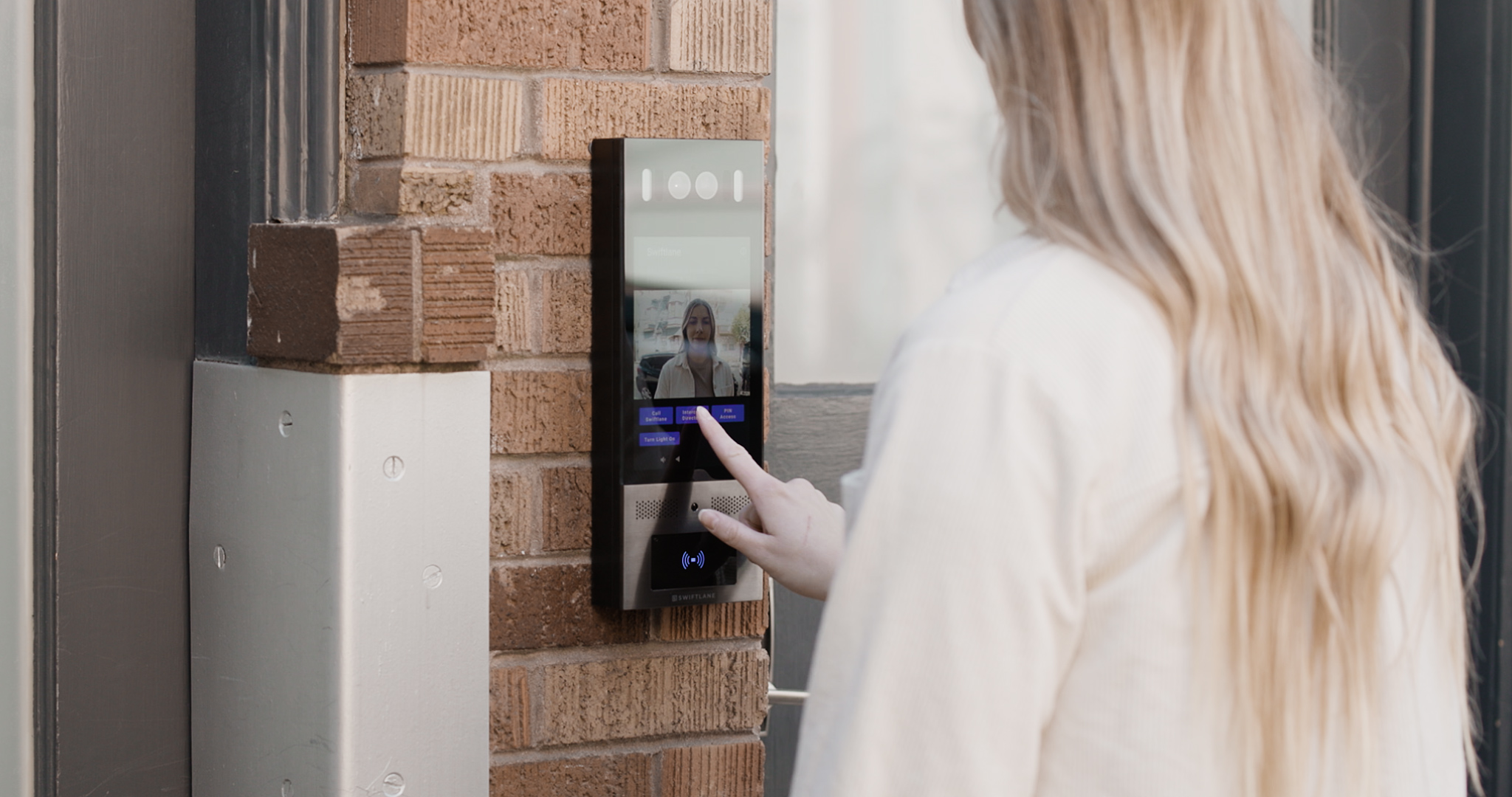
Swiftlane stands out as a leading choice for door access control systems, providing a broad spectrum of features suitable for multifamily residences, commercial spaces, and businesses of all sizes. Utilizing its cloud-based platform, Swiftlane ensures smooth management and scalability for any organization’s door access systems. Some of Swiftlane’s standout features include:
- Touchless access control employing facial recognition, mobile credentials, or key cards
- Compatibility with current door hardware and access control systems
- Adjustable access levels and time-sensitive permissions
- Remote administration via an intuitive web interface
- Hassle-free installation and setup
- Detailed logs of each access event with timestamps and identities to help you scrutinize entry and exits in real time.
Frequently Asked Questions
What is an access control door controller?
An access door controller is a device that ensures only authorized individuals have secure entry to a building. These systems can vary in complexity, from straightforward keypads to intricate networked configurations.
How much does access control cost per door?
Keypad entry systems typically range from $500 per door to over $1,500 per door and require hardware installation outside the door granting access to the building.
How do biometric access control systems work?
Biometric access control systems work by verifying an individual’s identity using distinct physical attributes, such as fingerprints or facial patterns, before granting them access to a facility.
This advanced technology is being adopted by businesses and organizations for its heightened security and reliability in managing access to restricted areas. Moreover, it eliminates the dependency on physical keys or cards, which can be misplaced or stolen.
What are the advantages of using smartphone-based access control systems?
Smartphone-based access control systems offer the dual benefits of security and convenience. They enable users to unlock doors remotely without the necessity of physical keys or access cards.
Such systems are gaining traction due to the secure and user-friendly access management they provide for buildings and other restricted areas. Additionally, they are a cost-efficient choice due to their minimal installation and upkeep requirements.

